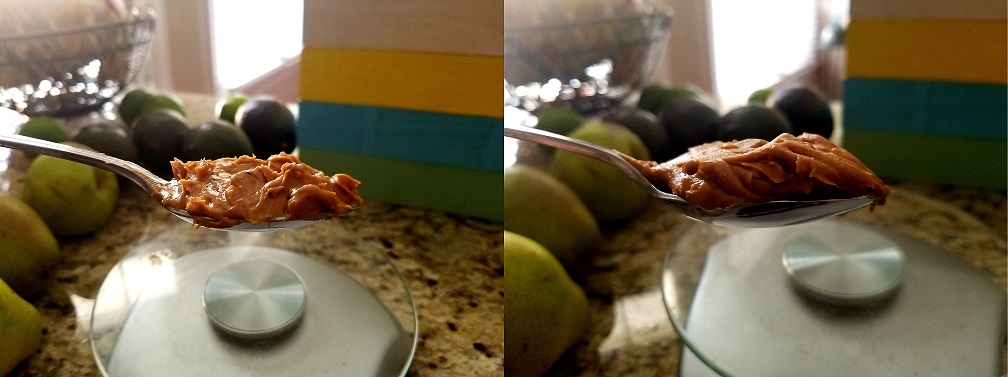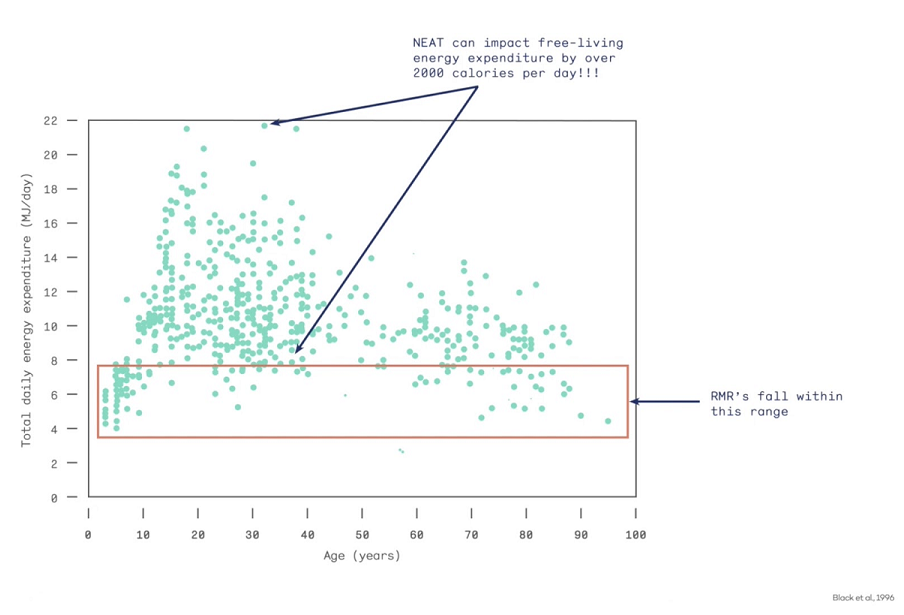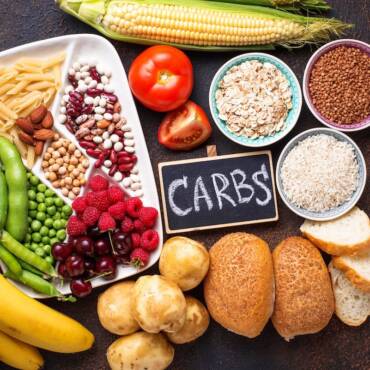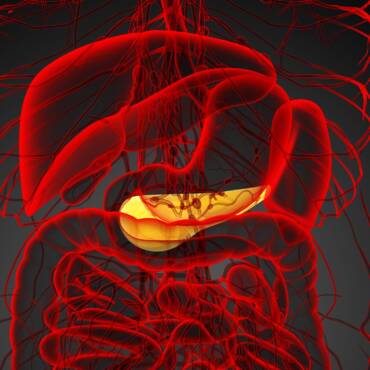Why you can’t lose weight
Patience or Programming?
Losing weight is a difficult battle. The sheer volume of information out there can leave you feeling overwhelmed. You have unsuccessfully tried to lose weight in the past, or have lost weight initially and are now at a stand still. Sound familiar? In this article, we discuss the potential issues you run into and how to alleviate them. By critically evaluating our practices, we can make our fitness journey much more stress free!
Intro
No matter how you look at it, losing weight (preferably body fat) comes down to expending more calories than you are taking in. If you aren’t losing weight, you simply aren’t burning more calories than you are eating. There is no way around this law of thermodynamics. There is no such thing as “starvation mode”, a mythical state where your body stores fat despite being in a calorie deficit. Very low-calorie diet research has debunked this once common claim.18-23 Your body cannot create something from nothing. Ergo if you are in an energy deficit, you cannot “store” or create fat stores from a calorie source that does not exist. It is logically (and scientifically) impossible.
There are metabolic adaptations your body goes through to maintain weight (both against gaining and losing). Fortunately, the resting metabolic rate adaptations are in the low hundreds of calories daily and not as significant as many believe.8 This means whether you believe you have a “slow” or “fast” metabolism, it is not overly significant with regards to weight loss or gain. It has been shown that there is no relationship between resting metabolic rate and weight gain or weight loss.9,10,11 Adaptations to Non-Exercise Activity Thermogenesis (NEAT), however, can be significant.14 We will get more in-depth with this later. Yet even with these adaptations, the laws of thermodynamics apply. Calories in vs Calories out are all that matters at the end of the day. Move more, eat less (calories).
In this article we will be looking at the major contributors to weight loss failure:
- Inaccurate caloric intake
- Over-estimating activity
- Weight loss vs Fat loss
- Biological issues
Inaccurate caloric intake
This is the most common reason people have a problem losing weight. They are under-estimating how many calories they are taking in. Either through not weighing accurately, not being compliant with a plan (going off plan on weekends can stall or reverse all progress during the week), overlooking ingredients in the cooking process (such as cooking with butter or oils when the plan does not take these into account), accidentally using “cooked” weights when a plan calls for “uncooked” weights, using milk for protein shakes when the plan calls for water, or simply by under-estimating portion size.
Peanut butter has been used as the definitive example of underestimating portion size:

The spoon on the left contains one serving by weight. The spoon on the right contains two full servings, which ends up being an extra ~200 calories in a single go. By the end of the day, this type of discrepancy can add up to a diet that consists of over 1000 calories more than intended.
The first step to correcting this issue is to make sure you are weighing food personally (to assure accuracy) and that you are keeping a log of your meals. Compliance is key. Studies consistently show that people (even professional dietitians) underestimate their food intake by large amounts (nearly 500 calories on average for the lay person!).3,4,5,6 That is the equivalent of an additional full meal! People who accurately weigh and log their meals lose significantly more weight than those that do not.1,2 Do yourself a favor and plan for success. This means it is important to schedule your weekly grocery shopping and meal prep time as if you would a job or schoolwork.
The more pre-packaged food you eat or the more you eat out can also have a dramatic effect on realistic calorie intake. It has been shown that these types of foods average 8-18% more calories than are claimed. In some cases, the discrepancy is as high as a 200% increase in caloric intake. In addition, free side dishes increased provided energy to an average of 245% of stated values for the entrees they accompanied.7
Moral of the story: if fat loss is a goal of yours, cooking at home from raw ingredients that you have weighed should be the mainstay of your arsenal.
Over-estimating activity
NEAT plays a critical role in weight management. NEAT levels are a measure of all activities you perform throughout the day that are not directly part of your exercise routine. This includes fidgeting, walking, dancing a jig, out-running venomous animals if you are Australian, picking up your child, etc. NEAT levels are also the main reason people tend to clump themselves into the categories of “fast” or “slow” metabolism. These designations have less to do with your metabolism, and more to do with the energy you expend in your daily life. Those with desk jobs are especially at risk for having low NEAT levels. NEAT variance can account for an over 2000 calories per day difference in energy expenditure!

Credit: Krieger
As you lose weight, your body attempts to “protect” itself from this change by lowering your NEAT levels subconsciously. The greater the caloric deficit and weight loss, the greater the reduction in NEAT.8 The end result is that you simply move less. To put this into perspective: a sedentary person burns, on average, 77 calories per hour resting. The mere action of walking 1 mile per hour can increase your energy expenditure nearly 2.5-3 times that amount. Additionally, resistance training has been shown to be of benefit as it can help off-set this decline in NEAT levels.15,16,17 This puts special emphasis on maintaining a regular weight training program during your fat loss period, as well as making sure your daily activity levels do not decline.
The best way to monitor your NEAT levels is to invest in a pedometer/accelerometer. During your weight loss journey, wear your accelerometer at all times you are not exercising. Using an accelerometer in this manner gives you a distinct gauge of how active you are when you are not working out. Since people tend to stay rather consistent with their exercise routine, the big variance in physical activity will often come in the form of decreased NEAT levels that may go unnoticed. This will allow you to identify a subconscious drop in NEAT, and adjust accordingly.
As a good rule of thumb, a daily step count of 10,000+ has been shown as useful in achieving physical activity levels that aid weight loss. Some individuals, however, may require up to 20,000 steps per day.12,13 Conscious changes may need to be made to assure adequate activity levels: take breaks every 20-30 minutes throughout your day to walk around, take the stairs, walk or bike somewhere instead of driving, etc.
Weight loss vs Fat loss
Many people get discouraged if they do not see the scale dropping dramatically at every two-week interval. Know that as you become more lean, weight changes become less pronounced (in the range of .5-2lbs of loss every few weeks even). You may stay the same weight or even gain a couple pounds occasionally. This can happen for various reasons that do not have to do with fat gain or the absence of fat loss. You may be retaining water due to diet or hormones, you may have added muscle weight that offset your fat loss, you may have started creatine recently, you may simply have more muscle glycogen than you have had in the past if you have recently added in more carbs, or it could be water retention as part of your menstrual cycle if you are female.
Do not fret if the scale does not budge over two weeks. The key is to watch for trends over longer periods. In the meantime, assuming your dietary compliance and NEAT levels are accounted for, focus on how you feel, how you look in the mirror, how your clothes fit, and how you are performing in the gym.
Biological issues
Health conditions such as diabetes, hypothyroidism, and polycystic ovary syndrome (PCOS), and medications such as antidepressants, corticosteroids, beta-blockers, diabetes medications, anxiolytics, birth control, anti-psychotics, anti-epileptics, etc can also alter weight loss progress. That is not to say this is the most common answer. In most cases where people believe there is a medical issue such as a hormonal imbalance, it is much more likely to be a caloric intake or energy expenditure issue. Some research has even shown actual caloric intake to be double what a patient estimates.3
If you truly believe you have a medical condition or that your medication is causing problems, please speak with a licensed medical professional. Blood work may be necessary to identify and treat your specific condition. Regardless of a medical condition, the law of thermodynamics still holds true. A medical problem may alter metabolic rate and appetite response, but calories in vs calories out still applies.
Receiving a proper diagnosis can help adjust your routine to account for this issue and to get you back on the path of reaching your goals. Understand that fat loss is still possible with these conditions, but it may require a lower calorie intake/higher energy expenditure than an equivalent healthy person.
Closing
In this article we have reviewed the most significant reasons for why your scale may not be budging. With that said, proper hydration, stress management, and sleep all add in as well. Aim for roughly 7-9 hours of sleep, adequate hydration daily, and a whole lot of:
Make sure to check out our personalized online coaching packages for your physique, health, and performance goals!
Citations
- http://europepmc.org/abstract/AGR/IND44116071/
- https://www.ncbi.nlm.nih.gov/pubmed/21185970
- https://www.ncbi.nlm.nih.gov/pubmed/1454084
- https://www.ncbi.nlm.nih.gov/pubmed/10617957
- https://www.ncbi.nlm.nih.gov/pubmed/18313427
- https://www.ncbi.nlm.nih.gov/pubmed/12396160
- https://www.ncbi.nlm.nih.gov/pubmed/20102837
- https://www.ncbi.nlm.nih.gov/pubmed/27460711
- https://www.ncbi.nlm.nih.gov/pubmed/28747328
- https://academic.oup.com/ajcn/article/72/5/1088/4729774
- https://academic.oup.com/ajcn/article/104/4/959/4557125
- https://www.ncbi.nlm.nih.gov/pubmed/21262061
- Schneider et al. Am J Health Promot, 21(2)85-89.2006
- Weigle et al. Metabolism, 37:930-936.1988
- Hunter et al. Med Sci Sports Exerc, 47:1950-1957.2015
- Hunter et al. J Appl Physiol, 89:977-984.2000
- Drenowatz et al. Springerplus, 4:798.2015
- DOI: 10.1093/ajcn/56.1.275S
- DOI: 10.1079/bjn19940006
- https://pubmed.ncbi.nlm.nih.gov/2613403/
- DOI: 10.1371/journal.pone.0004377
- https://pubmed.ncbi.nlm.nih.gov/2341229/
- DOI: 10.7326/0003-4819-119-7_part_2-199310011-00012








